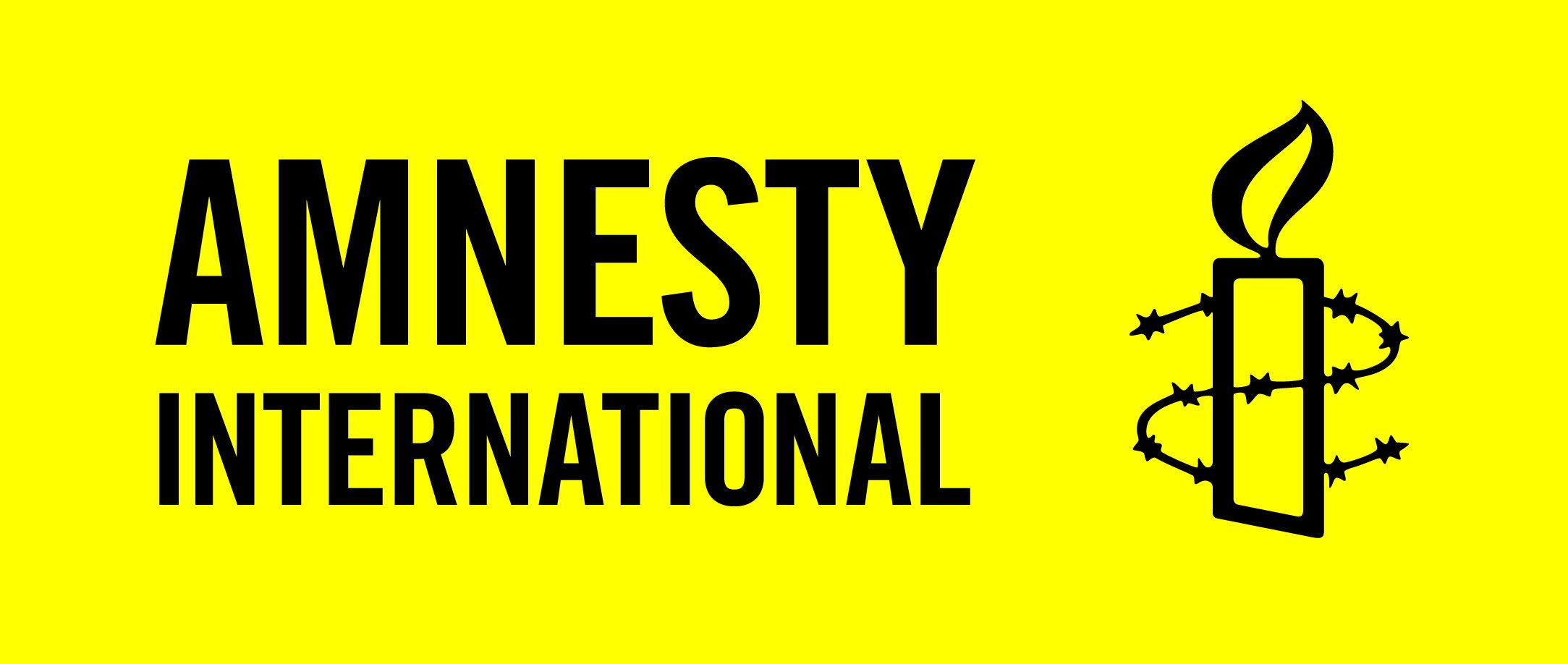Overview
Although outputs are generally carefully written in the original language, it often happens that they go on to be designed without particular thought to how they will eventually be translated into various languages. Ensuring that designers factor multilingualism into their work from the start can save significant time and effort by reducing the need for extensive rework when adapting materials for translation or display in multiple target languages. By following our tips and guidance on good design practices and formatting standards, the multilingual production process becomes smoother and more efficient, resulting in higher-quality translated outputs that effectively reach the intended audience in the right format.
The Translation and Language Strategy Department of Amnesty International’s Language Resource Centre have put together some “rules of thumb” for best practice for multilingual design:
- Design Templates and Assets should be your design models.
- Consider the fact that different languages take up different amounts of space – for instance, the translated Spanish version of an English text is typically 20% longer.
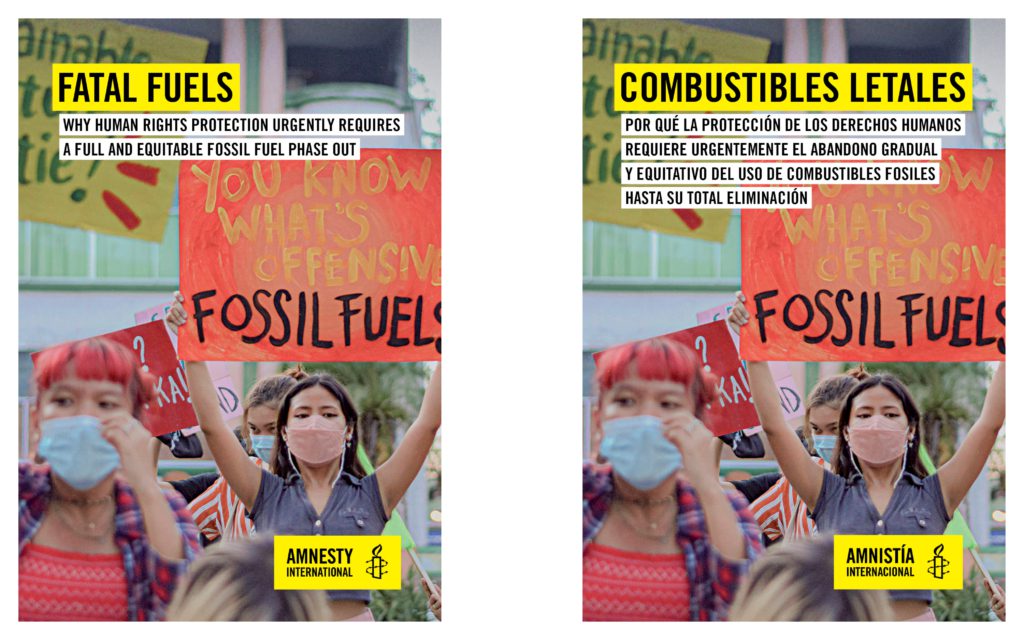
- Similarly, consider that for some languages (e.g., Arabic), the entire layout needs to be reversed as the text reads right to left.**
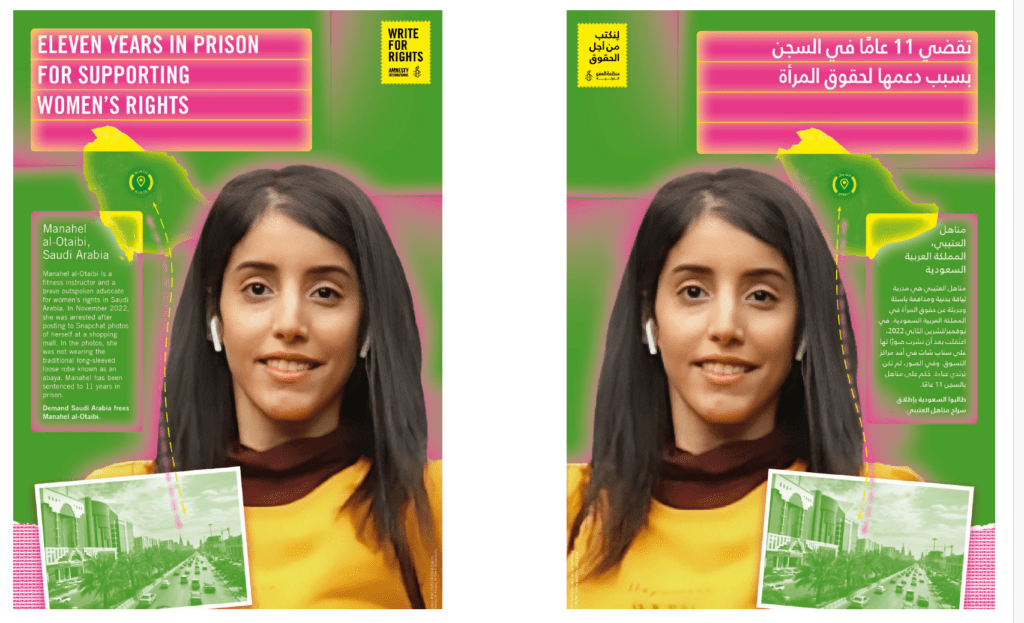
- Refer to the “Friendly & Unfriendly Formats for Translation” section below.
**Please note that editorial images used in the context of Amnesty’s outputs must not be reversed or flipped. Text may be overlaid but the image should not be changed or art-worked in any way.
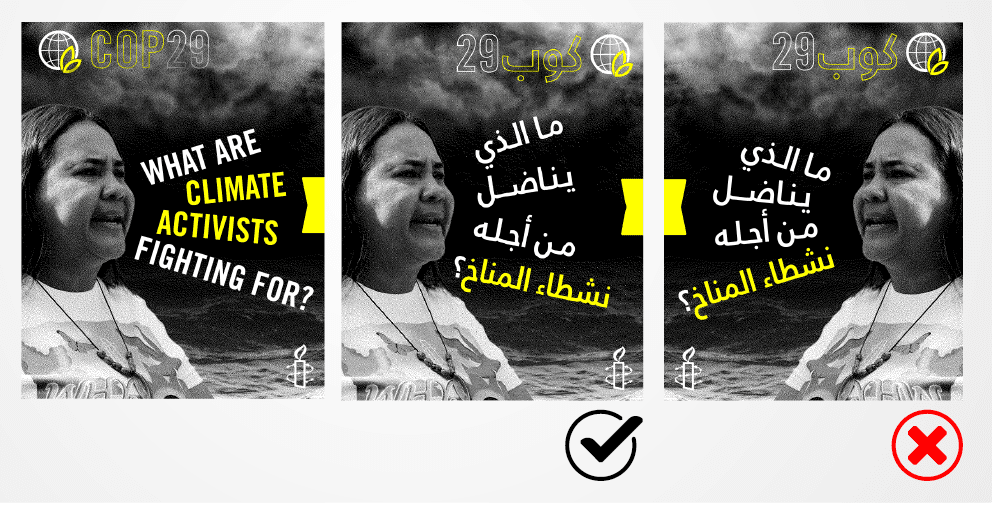
Some tips for multilingual typesetting
Typesetting is the process of using design software to arrange text and graphics, producing final formats for print or digital publication—such as reports, brochures, books, postcards, and merchandise.
Where possible, ensure that the formatting of the original text is organized to professional standards by applying style and character sheets and maintaining consistent formatting throughout the output.
- Every piece of text should conform to the same line spacing, ensuring that paragraphs, images, and other elements align consistently with the baseline grid. The baseline grid is the interval between lines in a paragraph and it should be 20% larger than the point size of the body text to ensure good legibility, especially when accents and diacritical marks are included in translated text, as these can risk cramping the vertical height of the text.
- Use a table rather than the ‘tab’ key to separate structured information. A table format will be much easier to work with when using Computer Assisted Translation (CAT) tools and subsequently typesetting translated versions.
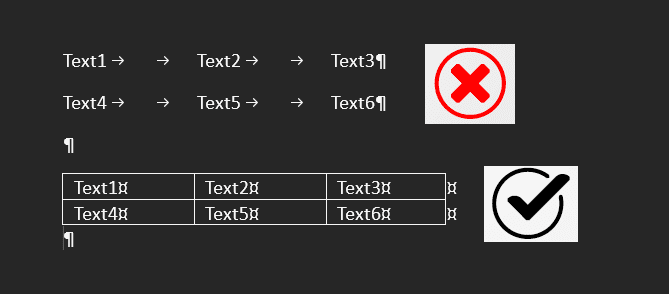
- Use paragraph and character styles instead of manually editing paragraphs, and avoid using manual line breaks.
- Use paragraph style sheets (character and paragraph attributes) for headings, sub-headings, epigraphs, photo captions and footnotes.
- Don’t forget to define the character style sheets to apply a set of character attributes to the selected text within a paragraph (e.g., hyperlinks, italics, bolds, superscripts, etc.).
- Use automatic footnotes (do not manually insert numbers in superscript format to create a footnote).
- For embedded images or graphics that contain text requiring translation, ensure the original file is supplied in an editable format to facilitate the creation of the translated version (for more guidance, please refer to the “Friendly & Unfriendly Formats for Translation” section below).
Depending on the software used, your package should include:
- InDesign: the INDD, IDML and final PDF, along with the links (images/graphics) and fonts used in the document.
- Illustrator: the *.ai and *.eps files, along with the links (images/graphics) and fonts used in the file.
- Photoshop: the .PSD file, along with the links (images/graphics) and fonts used in the file.
Ensure that all files are saved in a format compatible with earlier versions of the software to avoid access issues, regardless of the platform or tool used. Close collaboration with translation partners is recommended to ensure that files are prepared in an editable format suitable for translation and subsequent typesetting workflows.
Friendly & Unfriendly Formats
Friendly formats for translation
The following formats are editable and compatible with translation software, making them ideal for efficient translation workflows.
| HTML documents | *.html, *.htm |
| Microsoft Word documents and Rich Text files | *.doc, *.docx, *.rtf |
| Microsoft Excel files | *.xls, *.xlt, *.xlsx |
| Microsoft Excel XML spreadsheets | *.xml |
| Microsoft PowerPoint files | *.ppt, *.pps, *.pot, *.pptx, *.ppsx, *.potx |
| Microsoft Visio files | *.vsd, *.vsdx |
| OpenOffice.org Write documents | *.odt |
| Photoshop | *.psd |
| Text files | *.txt |
| SubRip video subtitle files | *.srt |
| Adobe InDesign IDML files | *.idml, *.indd |
| XML files | *.xml |
| XLIFF files | *.xlf, .xlif |
Unfriendly formats for translation
The following formats are not easily editable or compatible with translation software, which can make the translation process more challenging.
| Images | *.jpg |
| Illustrator | *.ai |
| Canva | |
| Markdown |
NB: The .pdf format from Adobe has established itself as the standard for viewing typeset documents, especially in publishing. However, this format is only partially suitable as a working format for translations. As you may know, it is not always possible to convert .pdf files into a format that is more suitable for translation, for example, into .docx for Microsoft Word – that’s, for instance, the case of scanned official documents and/or pictures of text saved in .pdf format.
While it is sometimes possible to convert .pdf documents into .docx using OCR (optical character recognition), such conversion might still be not optimal (e.g., character corruptions, etc.) and would not allow translators to make the most of their CAT tools that help them make the translation process more agile and quality driven.
Therefore, please check with your translation partner, as they will likely prefer to receive materials for translation in formats other than .pdf or to have the package supplemented with additional files.
Optimizing document preparation for multilingual typesetting
Dealing with multilingual content can be complex, especially when translators use different tools. To address this, our guidelines are designed for two scenarios:
- Translators Using Computer-Assisted Translation Technology
- For Translators Not Using Computer-Assisted Translation Technology
By considering these scenarios, we ensure that the document’s design remains consistent and adaptable across languages. Below, you’ll find some guidelines to streamline the preparation process for multilingual workflows.
For Translators Using CAT Tools
- Exporting Text for CAT Tools: Prepare and export text from InDesign documents in a format compatible with CAT tools, such as IDML, to facilitate import and export of translations.
- Layering and Linking Text Frames: Maintain linked text frames to ensure text flow is preserved when importing translated content back into the document.
- Utilizing Style Sheets: As also mentioned in the tips section above, apply paragraph and character styles rigorously to maintain consistent formatting when text is reimported after translation.
- Provide context: Provide clear annotations and references within the document to offer context for translators, aiding in accurate translation.
- Preparation for Text Expansion or Contraction: Design text containers with flexibility to accommodate the varying lengths of translated text, which is especially pertinent when using CAT tools that might insert text programmatically. For example, ensure there is enough space for longer translated text, as languages often expand or contract during translation.
- Generating Visual References: Provide a PDF low-res versionof the original InDesign document pages. These visual references should be clearly labeled and provided to the translator. They offer a visual context for the text, helping translators understand where each piece of text belongs within the layout and how it interacts with other elements like images and graphics.
- Adjusting References to Figures and Graphics: Translators need to adjust references to figures or graphics that may shift position in the document. For example, text might refer to a figure with a note such as “above” or “on page 19”. Translators should ensure these references are updated to reflect the actual position of the figure or graphic in the translated version
For Translators Not Using CAT Tools
- Export Text to an Editable Format: Use InDesign’s export functionality to convert the document’s text content into an editable format, such as RTF (Rich Text Format) or TXT (Text File), which can then be easily copied into a Word processing document or a spreadsheet for the bilingual table.
- Creating Bilingual Tables: Organize the exported text into a two-column table in a Word processing document like Microsoft Word or a spreadsheet program like Microsoft Excel. One column should contain the original language text, and the adjacent column will be left blank for the translator to fill in with the translated text. This format clarifies the correspondence between the original and translated texts, simplifying the typesetting process.
- Generating Visual References: Just as in the case of translators using CAT technology, provide a PDF low-res versionof the original InDesign document pages.
- Sharing Files with Translators: Package all these materials (editable text files, bilingual tables, visual references, and documentation) in an organized manner, possibly using a cloud storage service or direct email, to ensure the translator has easy access to all the necessary resources.
By adjusting our document preparation practices to accommodate both translation approaches, we ensure that our designs remain flexible and accessible. This dual-path strategy enhances the efficiency of the multilingual production process, ensuring that our materials are adaptable, accurate, and culturally resonant across all languages.
Further Information and Support
For questions or additional guidance, feel free to contact Amnesty International’s Language Resource Centre at [email protected].
